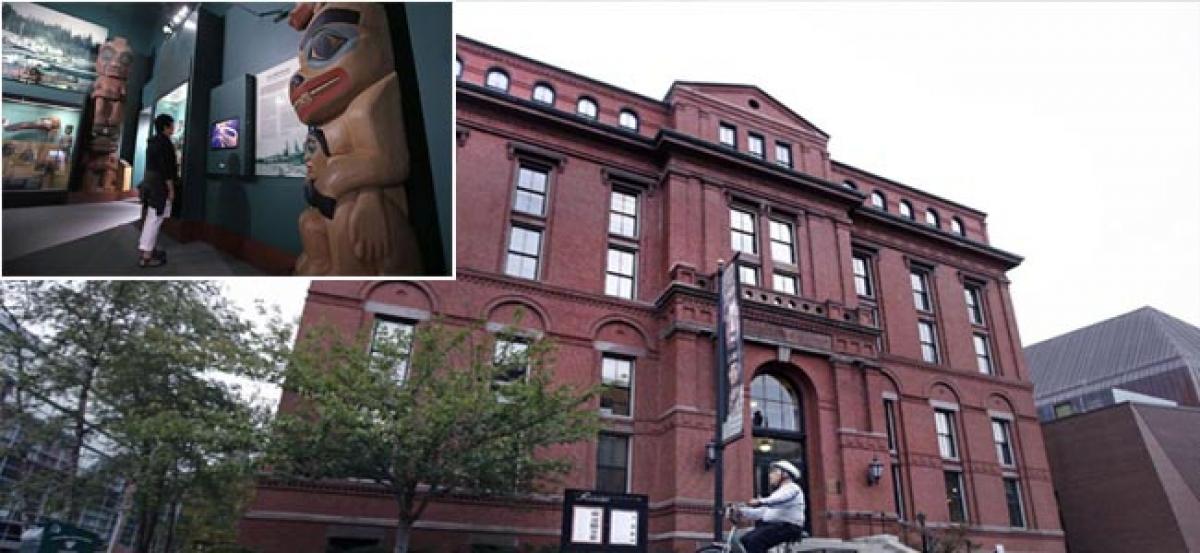Live
- Seethakka consoles bereaved family
- Police bust chain-snatching gang in Chittoor
- Earth's Freshwater Supply Declining Rapidly: A Warning of Prolonged Droughts Ahead
- 2 nabbed, 3 pistols seized for extortion
- Kavi sammelan held as part of Library Week
- Civil supplies dept launches Whatsapp service for paddy procurement
- State sanctions Rs 205 cr
- International Men’s Day 2024: Date, History, Significance, Celebration, and Theme
- SIT gears up for field investigation in Tirumala Laddu adulteration case
- Kanakadasa Jayanti: Celebrating the Life of Karnataka's Poet-Saint and Philosopher
Just In

As one of the world\'s oldest museums dedicated to anthropology turns 150, it\'s undergoing some big changes to showcase its significant role in developing the discipline.
Cambridge: As one of the world's oldest museums dedicated to anthropology turns 150, it's undergoing some big changes to showcase its significant role in developing the discipline. Leaders of the Peabody Museum of Archaeology and Ethnology at Harvard University hinted this month at changes to come when they trotted out for one day only some of its quirkier, rarely seen pieces as part of a birthday bash marking the day in 1866 when philanthropist George Peabody committed USD 150,000 to help found the museum. Among the curiosities was a grizzly bear claw necklace from Meriwether Lewis and William Clark's expedition to the Pacific coast and a grotesque, 19th century "mermaid" made of wood and fish parts that showman PT Barnum once took on a national tour to fanfare.
The "FeeJee Mermaid" and other items long sitting in storage will find a permanent home in public view as part of a new exhibition exploring the Peabody's role in anthropology, said Castle McLaughlin, a museum curator. When it opens in April, "All the World is Here: Harvard's Peabody Museum and the Invention of American Anthropology" will feature roughly 600 objects. Officials hope to show a greater range of the museum's more than 1 million items, only a fraction of which are on display now. "Harvard was very much in the business of developing anthropology," said Jane Pickering, head of Harvard's science and culture museums. "It's a really interesting occasion to reflect on the Peabody and its role. Within its field, it's incredible.
The size and quality of its collection is truly astonishing." McLaughlin said the display will be the largest and perhaps most ambitious the museum has attempted, taking up an entire floor. The museum, which opened on Harvard's campus in 1877, currently has two levels of exhibit space open. The new exhibition will highlight curiosities collected by American ship captains that traveled to the Far East from the late 1700s to mid-1800s, of which the "Feejee Mermaid" is a prime example.
The museum's many famed excavations — from the prehistoric earthwork in Ohio known as Great Serpent Mound to the Mayan ruins of Copan in western Honduras — will also be a focus, as will the museum's role in the World's Columbian Exposition of 1893. The Peabody's director at the time, Frederick Ward Putnam, played a leading role in planning the lavish fair, which took place in Chicago and celebrated the 400th anniversary of Christopher Columbus' first voyage to the Americas. Putnam scoured the globe for unique artifacts and helped introduce the principles of anthropology to the wider public through the fair.

© 2024 Hyderabad Media House Limited/The Hans India. All rights reserved. Powered by hocalwire.com







